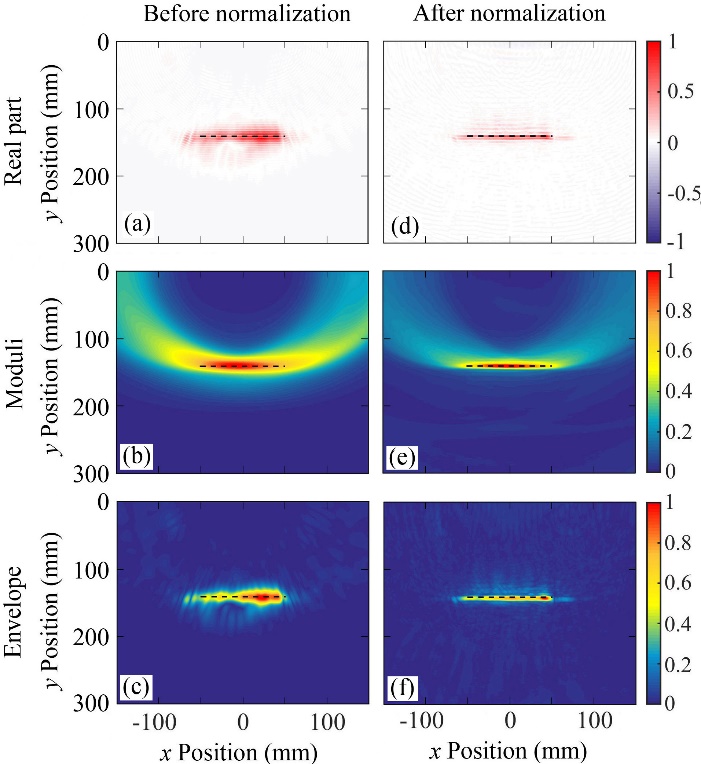The detection and imaging of the cracks in the thin plate are of critical importance for the structural health monitoring of high-pressure vessels, aircrafts, reactors and other plate-like structures.
Flexural wave, as one of the guided waves in the plate, is a main tool to detect the defects in the plate. However, detecting and further imaging cracks in the plate by flexural waves is difficult due to the dispersion of the wave. The reverse time migration (RTM) method proposed by geophysicists has been used for ultrasonic detection and imaging by bulk waves.
Recently, a research team led by Academician WANG Chenghao from the Institute of Acoustics (IOA) of the Chinese Academy of Sciences proposed a modified RTM method to image a crack in a thin plate. The study was published in AIP Advances.
As the key point of this method, researchers took the time reversal (TR) of the expanded flexural wave at a receiver as the backward wave in the cross-correlation imaging condition of RTM, thus the expanded backward wave would be re-compressed due to the dispersion of the flexural wave.
The backward wave is time reversed again when arriving at a certain point on the plate, and then correlated with the forward wave transmitted from the original source. The image of the crack is obtained by superimposing the cross-correlation results of many source-receiver pairs in the transmitting and receiving arrays.
In the experiment on imaging a crack in a thin plate. A precise experiment for imaging a crack located at the center area of a thin aluminium plate with dimensions of 1 m × 1 m × 1 mm was conducted. The transmitted and received waveforms of the flexural wave signals were recorded with high fidelity by a laser vibrometer, thus ensuring accurate and clear image of the crack through this modified RTM process.
Experimental results showed that the location, shape and length of the crack on the back of the plate can be accurately confirmed, as shown in the figure below.

Figure 1. Measured acoustic pressure fields. (a) The incident pressure field at 0 ms. (b)–(d) The scattered pressure fields at 1.8 ms from the soft plane (b), the soft target (c), and the cloaked soft target (d), respectively. (Image by IOA)
Although only a horizontal crack in a thin plate was studied in the work, it is believed that the cracks in other shapes, such as circular arc shapes and titled cracks, can also be imaged through the same method, which will be studied in the future work.
Funding for this research came from the National Natural Science Foundation of China (11804256 and 11474304).
Reference:
GAO Xiang, LI Jian, MA Jun, LI Junhong, CHENG Jianzheng, WANG Chenghao. Reverse-time-migration imaging for a crack in a thin plate by dispersed flexural waves. AIP advances (E-pub 03 December 2018). DOI: 10.1063/1.5063721.
Contact:
WANG Rongquan
Institute of Acoustics, Chinese Academy of Sciences, 100190 Beijing, China
E-mail: media@mail.ioa.ac.cn


